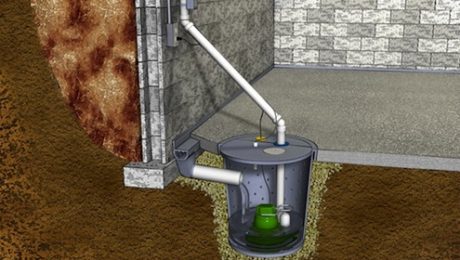Sun, Sea, Sand and Sump Pumps
Yes, we said sump pumps. While Florida is known for it’s warm weather and sand, rain and severe tropical storms are also a reality. In 1987 the Federal Clean Air Act required all new construction to have a sump pump, but it’s just as important in existing homes, particularly if the property is prone to flooding.
What’s a sump pump? An electric pump installed either in the basement floor or outside the home in a basin which is below the lowest level in the house. which The pump is activated by rising water and removes the water from the house or from below the house before flooding occurs.
There are two types of sump pumps; submersible and pedestal.
A submersible pump sits entirely within the sump basin. When water is present, some or all of the pump is submerged. As the water rises, a float or pressure switch turns on the motor and pumps it out to a minimal water level. Because the pump is underwater, it runs cooler and lasts longer. Another benefit is because everything is contained within the basin, it can be covered with a lid.
A pedestal pump is mounted on a stand above the sump basin, where most of it remains dry. The water comes up through a suction pipe and the pump is triggered by a float or pressure switch. Since the motor and electrical connections are not submerged, it’s easier to perform routine maintenance and switch components. The downside is that the pump isn’t covered.
It’s easy to forget about the sump pump when doing regular plumbing maintenance, but this is one fixture you don’t want to neglect; when you need it, you REALLY need it.
Three things can cause your pump to fail:
• Clogged discharge lines
• Power failure
• Lack of maintenance
Keep in mind, during heavy storms or prolonged periods of rain it’s not uncommon to lose power. Power failure can be mitigated with a battery back-up system, which is highly recommended. To avoid the other two causes, test your pump regularly. A professional can test more thoroughly, but you can certainly do it on your own if necessary.
To check:
• Make sure the power is on.
• Clear debris from the sump basin.
• Fill the basin with water to the level where it will activate the pump.
• Lift the float and make sure the pump kicks in. (If it doesn’t, don’t leave it running, which could cause damage.)
• If the pump is working, let water run through it to clear out the debris.
• If it’s not working, call for repair.
- Published in Tips of the Trade

